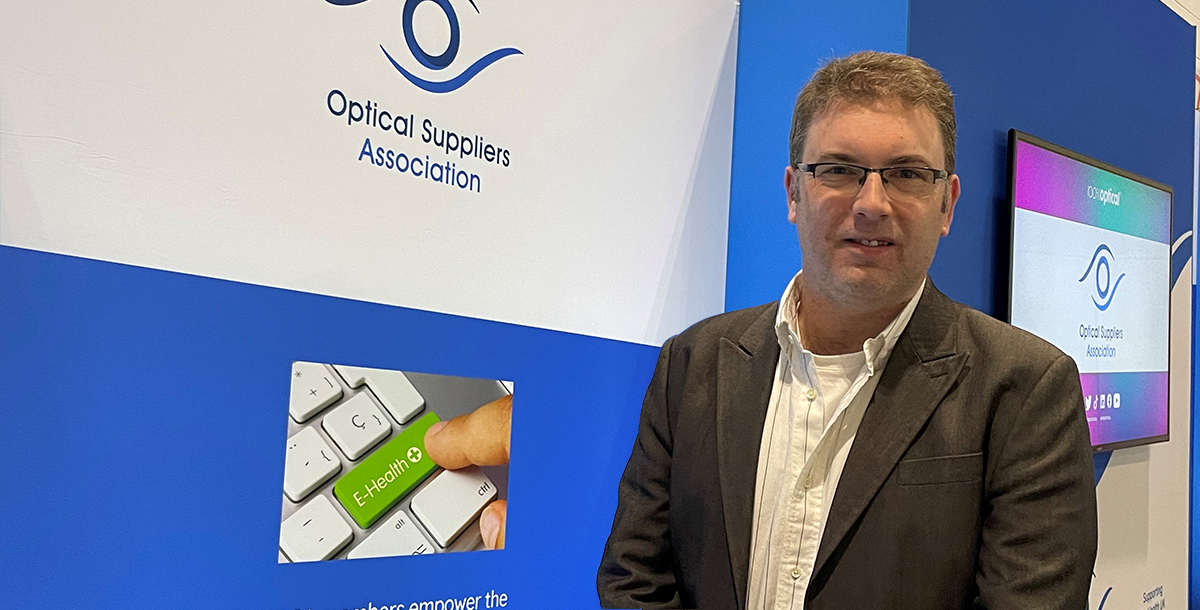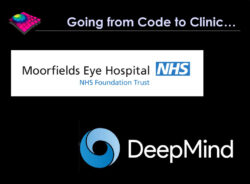TRANSFORMING EYECARE WITH AI HEADLINES AT 100%
 March 8, 2023
March 8, 2023
Google’s DeepMind and Moorfields Eye Hospital – just two stops apart on the London Underground – are transforming global eyecare with AI, delegates to the OSA (Optical Suppliers’ Association) stand at 100% Optical heard.
Pearse Keane, Professor of Artificial Intelligence, University College London and Moorfields retinal disease specialist, told delegates that artificial intelligence (AI) is going “from code to clinic” with optometry and ophthalmology at the forefront of all healthcare sectors.
 Pearse confirmed that optical coherence tomography (OCT) imaging has become the dominant ocular modality with more images acquired per year than from all other modalities combined, and with Moorfields Eye Hospital acquiring more than 1,000 OCT scans a day.
Pearse confirmed that optical coherence tomography (OCT) imaging has become the dominant ocular modality with more images acquired per year than from all other modalities combined, and with Moorfields Eye Hospital acquiring more than 1,000 OCT scans a day.
“We believe that the NHS has the largest amount of data in one resource in the world – the challenge is how we analyse this and make clinical judgements. It is a great opportunity, particularly in view of the fact that, since 2017, ophthalmology has overtaken orthopaedics as the number one specialty for appointments, with a 37% increase in appointments over the last five years,” said Pearse.
“We are drowning in the number of patients we need to see, but new technology can address some of these problems by applying deep learning to these images. Technology is really advancing ophthalmology and optometry which are at the forefront of AI in healthcare. The promise of AI is how we bring world-class expertise out of specialised hospitals and potentially into the community and homes of patients.”
The collaboration between Moorfields and Google/DeepMind is progressing, with a central focus on ensuring that clinical AI is robust, reliable, safe and fair. Alongside clinical validation, regulatory approvals are also required before such systems can be used for direct clinical care.
Pearse also unveiled to delegates Oculomics, a recently coined term which describes the use of advanced retinal imaging, big data and AI to use the eye as a window to the rest of the body. With blood vessels and nerves exposed and visible, it is possible to determine non-ophthalmic pathologies. With oculomics it will be possible to reveal the sex, age, blood pressure and smoking status of the patient from retinal photographs. In the future, this may allow prediction of other systemic diseases.
“The retina is the only part of the brain that we can visualise, and is important in linking risk factors for stroke, heart attack and dementia, even schizophrenia and Parkinsons. There are huge implications to picking up systemic disease early,” he added.
With the new Moorfields Hospital due to open in 2027, it is a time of huge significance for such a world centre of excellence and with the commercial benefits of this global project coming back to the UK.
Issued for The OSA
By Janice English 0777 9970 937
6.3.23

